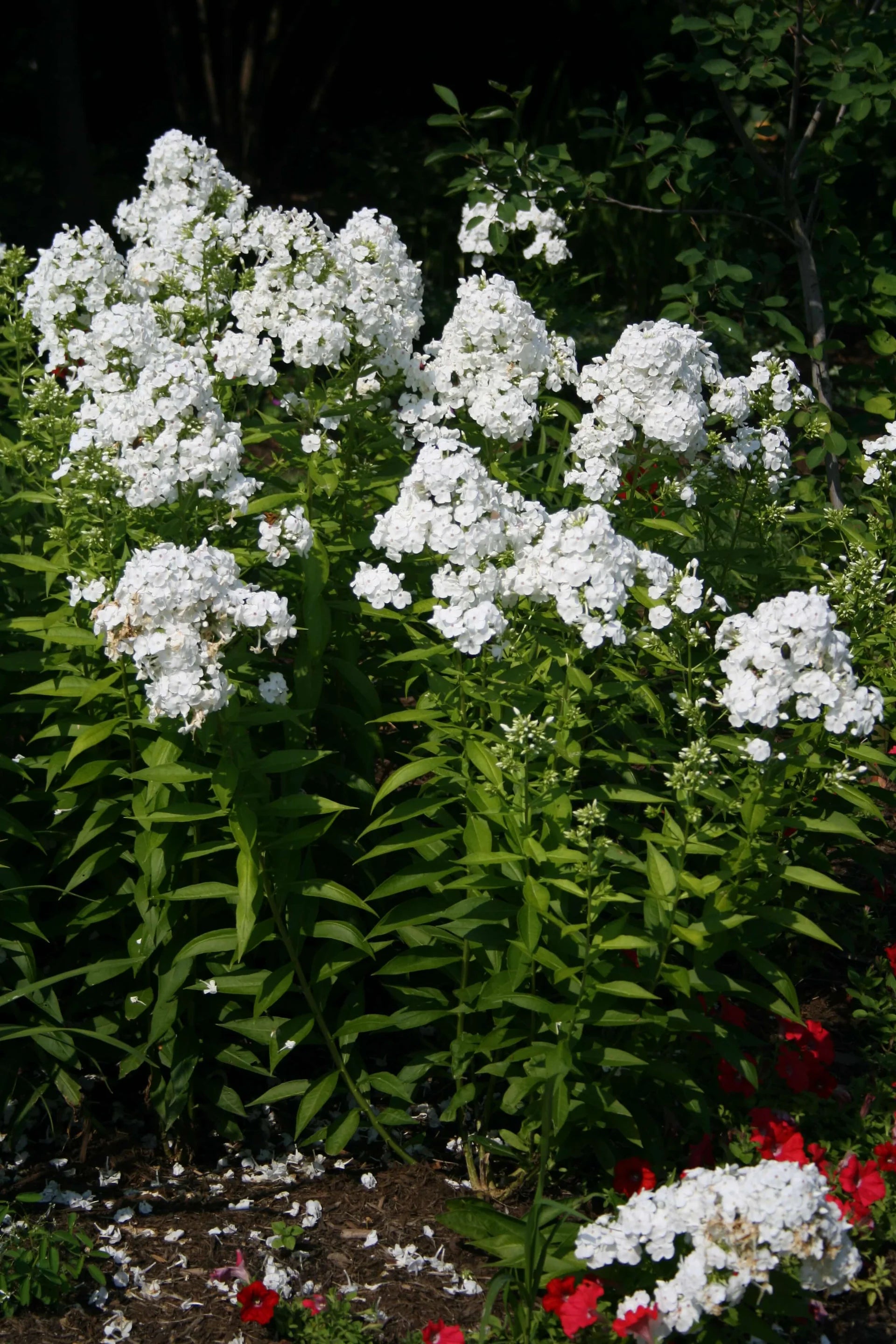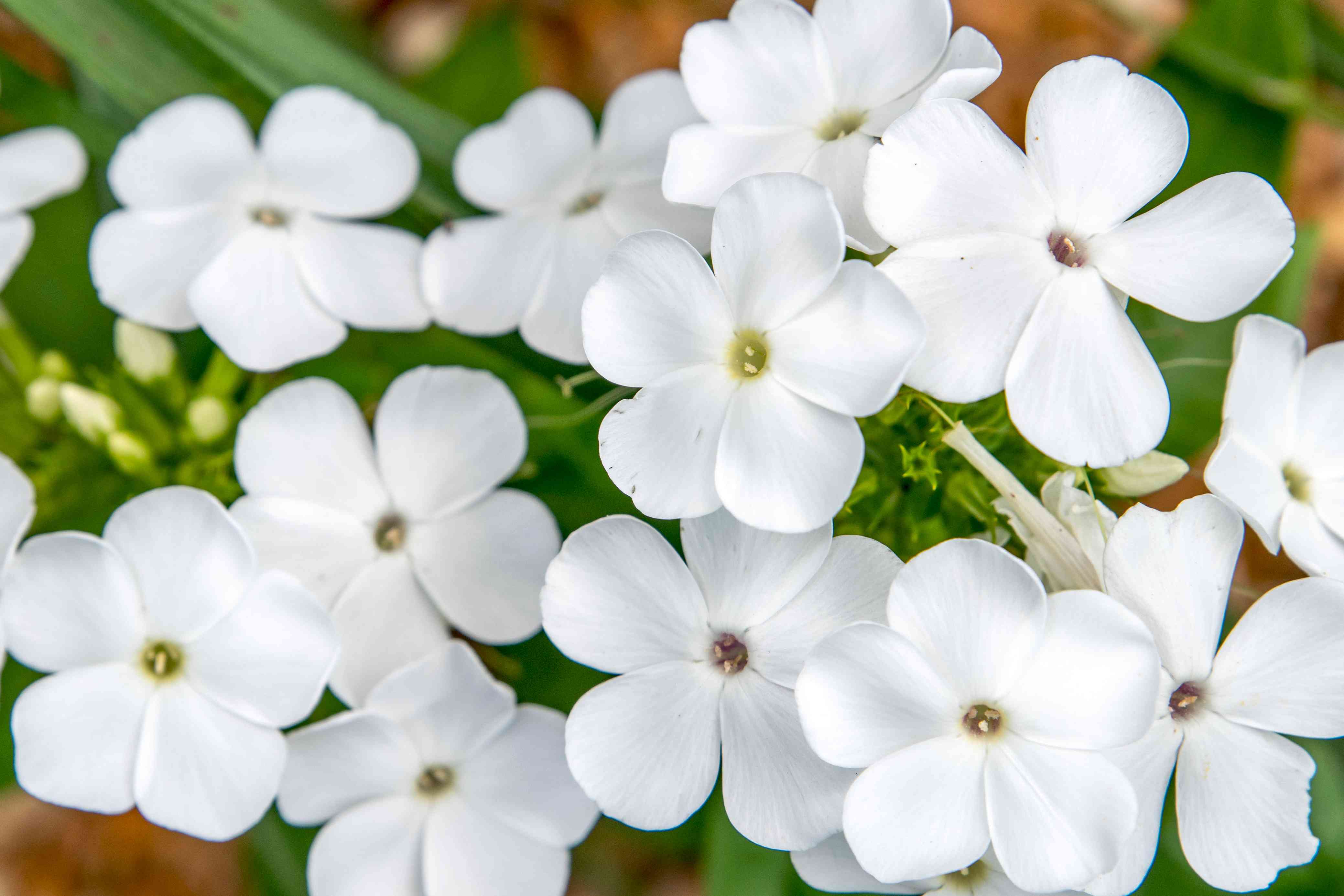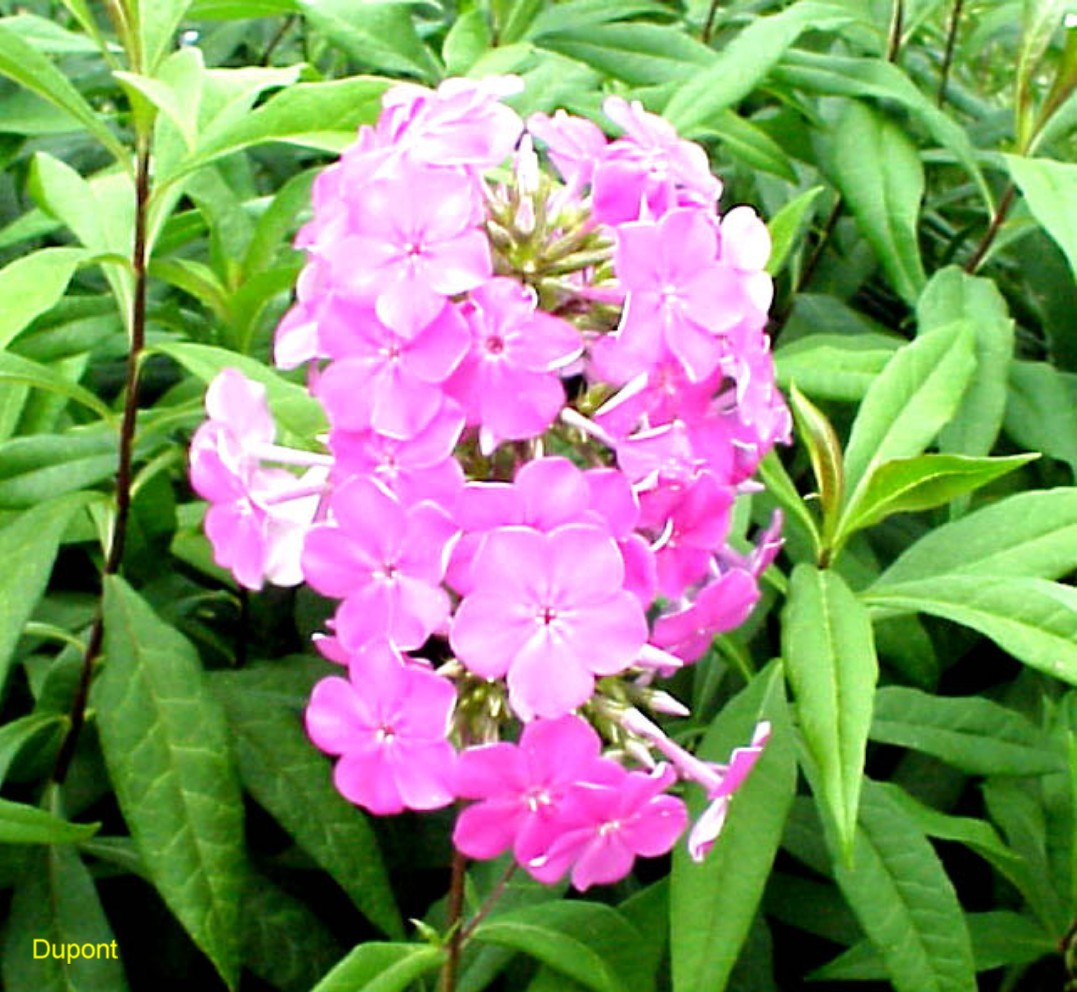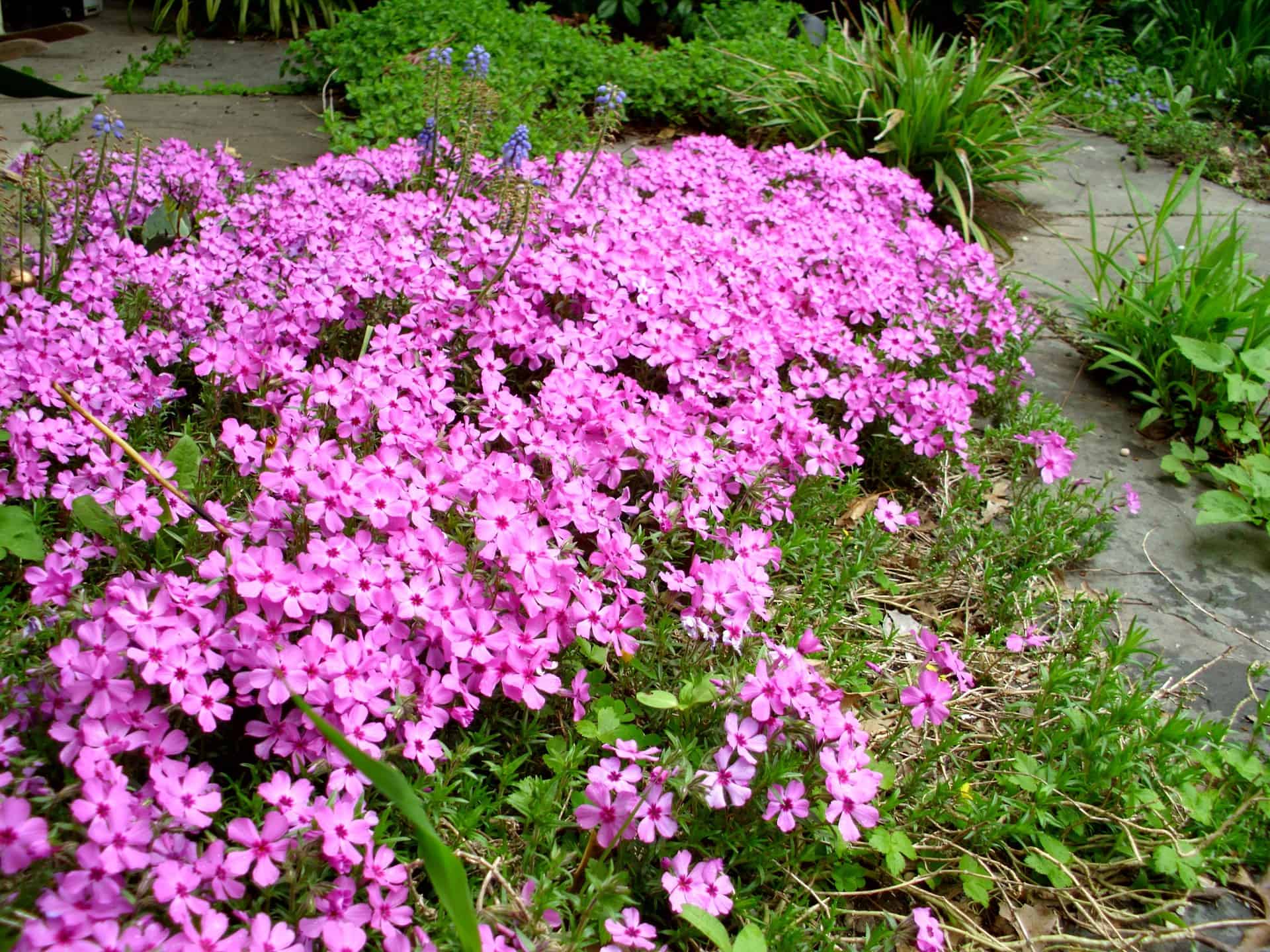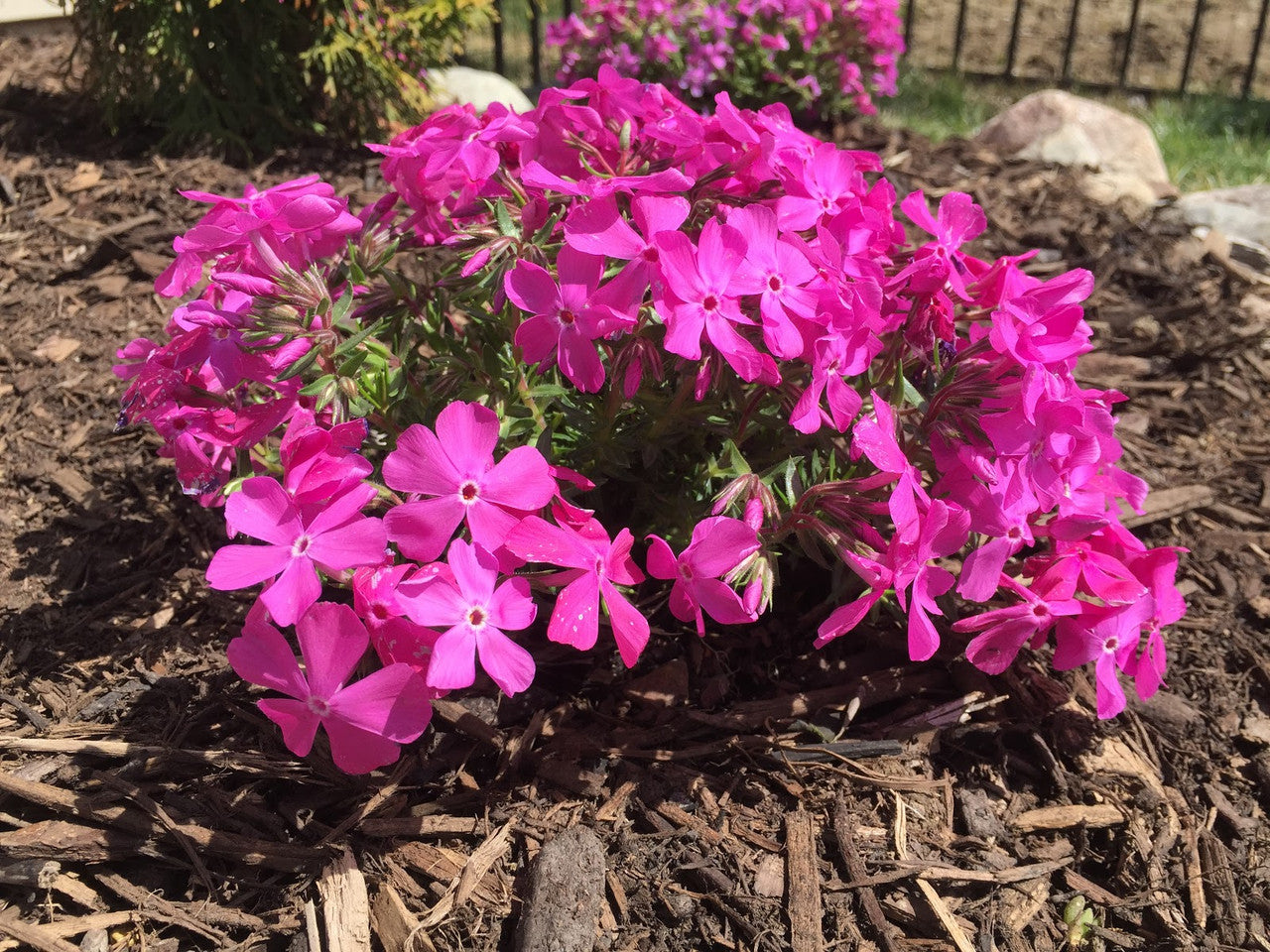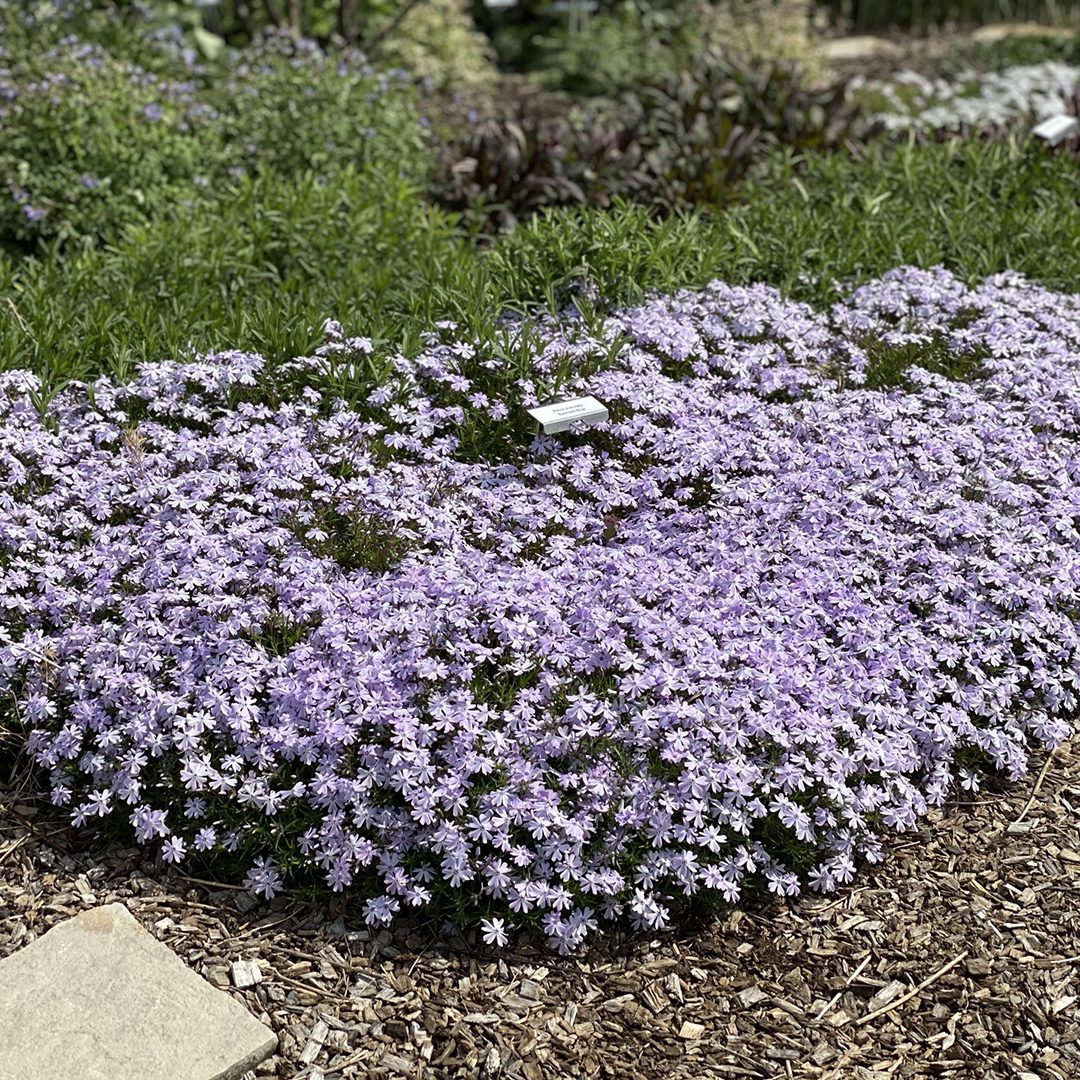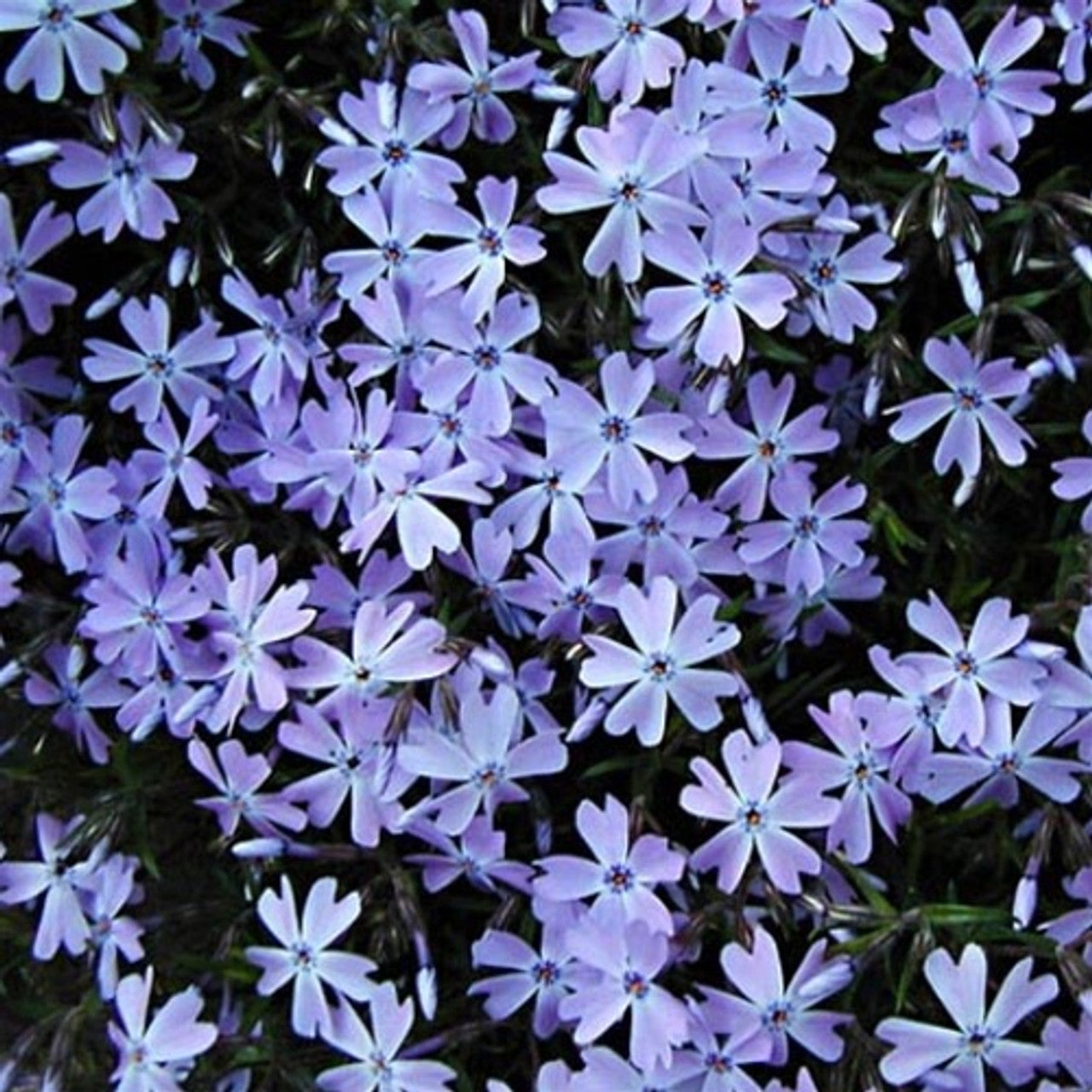Phlox paniculata, commonly known as garden phlox, is native from New York to Iowa south to Georgia, Mississippi, and Arkansas. It has escaped gardens and naturalized into areas beyond its original native range. This upright perennial grows in a clump to 2-4' tall and 2-3' wide on stiff stems clad with conspicuously veined, opposite, pointed, elliptic, deep green leaves. Fragrant, tubular, pink-purple to white florets are densely packed in large, tiered, domed terminal clusters over a long July to September bloom period. Each floret has a long corolla tube and five flat petal-like lobes. Butterflies and hummingbirds love flowers.
'David' is a garden phlox cultivar that grows in an upright clump to 3-4' tall—fragrant, pure white tubular flowers with long corolla tubes and five flat petal-like lobes. Individual flowers are densely arranged in large, terminal, pyramidal clusters in summer atop stiff, upright stems that seldom need staking. Long mid to late summer bloom sometimes extends into early fall. Narrow, opposite, pointed, lance-shaped leaves. Good fresh-cut flowers.
Grow in moderately fertile, medium moisture, well-drained soil in full sun to light shade. It is best in full sun. Prefers rich, moist, organic soils. It also prefers climates with mild summers compared to sweltering and humid conditions. It needs good air circulation (space well and thin out stems as needed) to help combat potential powdery mildew problems. Intolerant of drought and needs to be watered in dry spells. Avoid overhead watering, however. It appreciates summer mulch, which helps keep the root zone cool. For winter, cut plants to the ground, remove them from the garden, and clean up all plant areas to minimize possible powdery mildew infection for the following growing season. Remove faded flower panicles to prolong the bloom period and prevent unwanted self-seeding (cultivars generally do not come true from seed).
